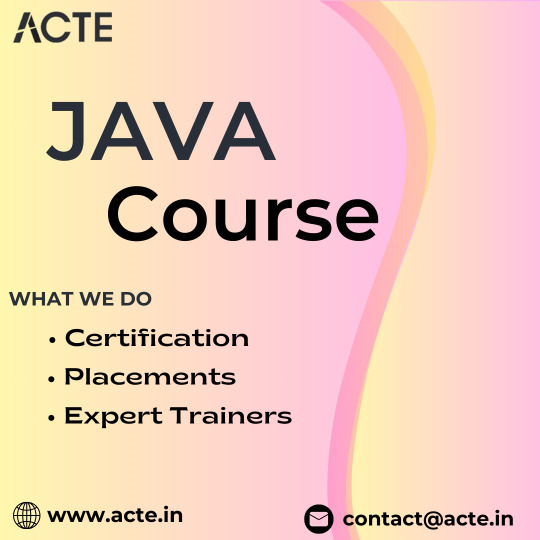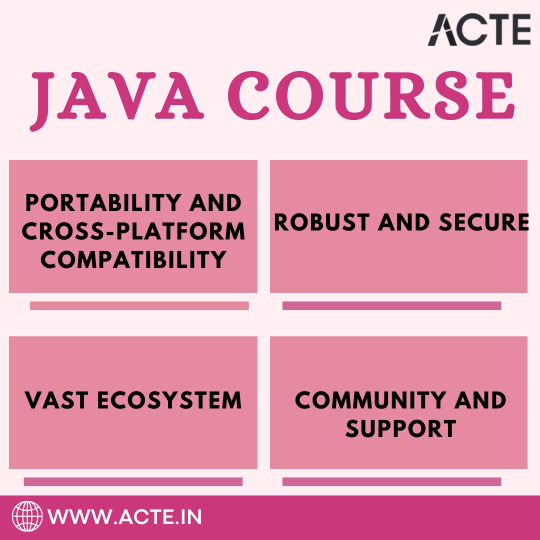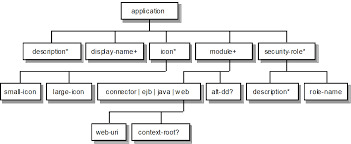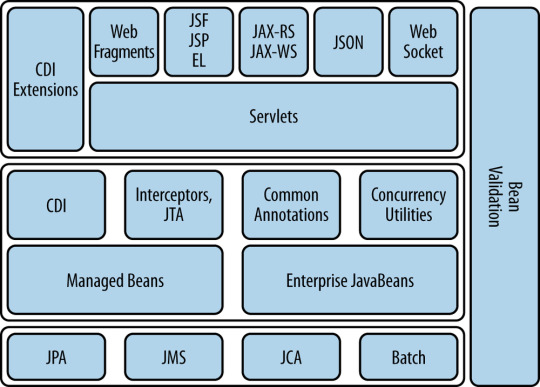#java course
Text

hi everyone, long time no see! but don't you dare think i just layed in bed and let my worthy time waste away (i did that the week before) !!! i actually had my first official (paid:o) internship week and slowly but surely i will guide your through my time there and show u all of the exercises i did!
i hope it might help a few of u and if u want to, feel free to try some of those exercises yourself!!
!!!! I just really have to add: i'm not the best at explaining and generally, when explain my code on this blog, i actually try to explain it to myself! if you don't understand what i'm talking about or if you think something is wrong, pls feel free to hmu and tell me about it:)
#codeblr#programming#coding#htmlcoding#studyblr#100 days of code#codecademy#skull internship#java#javaprogramming#java course#java developers#webdesign#webdevelopment#codergirl#htmllearn#code#code job#css#internship#learn to code#php#php training#phpmyadmin
32 notes
·
View notes
Text


Late night studies
#dark academia#study space#studygram#study motivation#studyspo#studywithme#study aesthetic#studyblr#stem studyblr#computer science#computer#javascript#java course#creative coding#coding
225 notes
·
View notes
Text
Mastering Java: Your Comprehensive Guide to Programming Excellence
Embarking on the journey of mastering Java is akin to entering a realm of endless possibilities. Java, a versatile and widely-utilized programming language, offers a broad spectrum of applications, from crafting web and mobile applications to powering robust enterprise systems. Whether you are a novice in the realm of coding or a seasoned programmer looking to broaden your skill set, the path to proficiency in Java is an exciting one.

In this comprehensive guide, we will be your guiding light through the intricacies of Java, starting from the foundational basics and progressing to the more advanced aspects of the language. Our objective is to equip you with the knowledge and skills that form a robust and unshakable foundation for your journey into the vibrant world of Java. Fasten your seatbelt as we embark on this exhilarating exploration, charting a course that will empower you to thrive in the ever-evolving landscape of software development.
Here's a 8-step guide to effectively learn Java
Step 1: Setting Up Your Development Environment
Your journey to becoming a proficient Java developer commences with setting up your development environment. The essential components are the Java Development Kit (JDK) and an Integrated Development Environment (IDE) like Eclipse or IntelliJ IDEA. These tools aren't just convenient; they're the gears that will drive your Java programming endeavors. They streamline the coding process, provide useful features, and offer an organized workspace, making your coding experience efficient and enjoyable.
Step 2: The Foundation - Learning the Basics
With your development environment ready, it's time to delve into the fundamental building blocks of Java. Begin by acquainting yourself with data types, variables, operators, and control structures. These are the nuts and bolts of the language, and a solid grasp of these concepts is essential. You'll find an abundance of online tutorials and beginner-friendly Java books to assist you at this stage.
Step 3: Navigating the World of Object-Oriented Programming (OOP)
The object-oriented programming (OOP) approach is well known in Java. To harness the true power of Java, immerse yourself in the world of OOP. Understand the concepts of classes, objects, inheritance, encapsulation, and polymorphism. This knowledge forms the bedrock of Java programming and enables you to design efficient, organized, and scalable code.
Step 4: Mastering Data Structures and Algorithms
Data structures (such as arrays, lists, and sets) and algorithms are the secret sauce behind solving real-world problems efficiently. As you progress, dive into the world of data structures and algorithms. These are the tools that will empower you to handle complex tasks and optimize your code. They're your go-to assets for creating efficient and responsive applications.
Step 5: The Art of Exception Handling
Java boasts a robust exception-handling mechanism. Understanding how to handle exceptions properly is not just an add-on skill; it's a vital aspect of writing reliable code. Exception handling ensures that your code gracefully manages unexpected situations, preventing crashes and delivering a seamless user experience.
Step 6: Exploring Input and Output Operations
In this step, you'll explore the realm of input and output (I/O) operations. Mastering I/O is crucial for reading and writing files, as well as interacting with users. You'll gain the ability to build applications that can efficiently process data and communicate effectively with users.
Step 7: Conquering Multi tasking
Java's support for multi tasking is a significant advantage. Understanding how to manage threads and synchronize their actions is vital for creating concurrent applications. Multithreading is the key to developing software that can handle multiple tasks simultaneously, making your applications responsive and scalable.
Step 8: Building Projects and Real-World Practice
Theory is only as valuable as its practical application. The final step involves applying what you've learned by building small projects. These projects serve as a proving ground for your skills and provide valuable additions to your portfolio. Whether it's a simple application or a more complex project, the act of building is where the real learning takes place.

As you step into this vibrant realm of Java, remember that continuous learning is the key to staying relevant and effective in the ever-evolving field of software development. Be open to exploring diverse applications, from web development to mobile apps and enterprise solutions, and never underestimate the power of hands-on practice. Building projects, no matter how small, will solidify your knowledge and boost your confidence.
In your quest to master Java, ACTE Technologies stands as a valuable ally. Their expert guidance and comprehensive training programs will sharpen your skills, boost your confidence, and pave the way for a rewarding career in software development. Whether you're embarking on your Java journey or looking to take your skills to the next level, ACTE Technologies offers the resources and support you need to thrive in the world of Java programming.
So, with Java as your trusty companion, and ACTE Technologies as your guide, the possibilities are boundless. Your journey is just beginning, and the world of software development awaits your innovation and expertise. Best of luck on your path to mastering Java!
9 notes
·
View notes
Text
Understanding Object-Oriented Programming and OOPs Concepts in Java
Object-oriented programming (OOP) is a paradigm that has revolutionized software development by organizing code around the concept of objects. Java, a widely used programming language, embraces the principles of OOP to provide a robust and flexible platform for developing scalable and maintainable applications. In this article, we will delve into the fundamental concepts of Object-Oriented Programming and explore how they are implemented in Java.

Object-Oriented Programming:
At its core, Object-Oriented Programming is centered on the idea of encapsulating data and behavior into objects. An object is a self-contained unit that represents a real-world entity, combining data and the operations that can be performed on that data. This approach enhances code modularity, and reusability, and makes it easier to understand and maintain.
Four Pillars of Object-Oriented Programming:
Encapsulation: Encapsulation involves bundling data (attributes) and methods (functions) that operate on the data within a single unit, i.e., an object. This encapsulation shields the internal implementation details from the outside world, promoting information hiding and reducing complexity.
Abstraction: Abstraction is the process of simplifying complex systems by modeling classes based on essential properties. In Java, abstraction is achieved through abstract classes and interfaces. Abstract classes define common characteristics for a group of related classes, while interfaces declare a set of methods that must be implemented by the classes that implement the interface.
Inheritance: Inheritance is a mechanism that allows a new class (subclass or derived class) to inherit properties and behaviors of an existing class (superclass or base class). This promotes code reuse and establishes a hierarchy, facilitating the creation of specialized classes while maintaining a common base.
Polymorphism: Polymorphism allows objects of different types to be treated as objects of a common type. This is achieved through method overloading and method overriding. Method overloading involves defining multiple methods with the same name but different parameters within a class, while method overriding allows a subclass to provide a specific implementation of a method that is already defined in its superclass.
Java Implementation of OOP Concepts:
Classes and Objects: In Java, a class is a blueprint for creating objects. It defines the attributes and methods that the objects of the class will have. Objects are instances of classes, and each object has its own set of attributes and methods. Classes in Java encapsulate data and behavior, fostering the principles of encapsulation and abstraction.
Abstraction in Java: Abstraction in Java is achieved through abstract classes and interfaces. Abstract classes can have abstract methods (methods without a body) that must be implemented by their subclasses. Interfaces declare a set of methods that must be implemented by any class that implements the interface, promoting a higher level of abstraction.
Inheritance in Java: Java supports single and multiple inheritances through classes and interfaces. Subclasses in Java can inherit attributes and methods from a superclass using the extends keyword for classes and the implements keyword for interfaces. Inheritance enhances code reuse and allows the creation of specialized classes while maintaining a common base.
Polymorphism in Java: Polymorphism in Java is manifested through method overloading and overriding. Method overloading allows a class to define multiple methods with the same name but different parameters. Method overriding occurs when a subclass provides a specific implementation for a method that is already defined in its superclass. This enables the use of a common interface for different types of objects.
Final Thoughts:
Object-oriented programming and its concepts form the foundation of modern software development. Java, with its robust support for OOP, empowers developers to create scalable, modular, and maintainable applications. Understanding the principles of encapsulation, abstraction, inheritance, and polymorphism is crucial for harnessing the full potential of OOPs concepts in Java. As you continue your journey in software development, a solid grasp of these concepts will be invaluable in designing efficient and effective solutions.
#javascript#javaprogramming#java online training#oops concepts in java#object oriented programming#education#technology#study blog#software#it#object oriented ontology#java course
2 notes
·
View notes
Text
Mastering Java: Your Path to Expertise at K-Tech Infotech

In the realm of programming languages, Java Course stands tall as a cornerstone of software development. Its versatility, reliability, and widespread use across industries make it a must-know for aspiring developers and seasoned professionals alike. At K-Tech Infotech, we’re excited to launch our comprehensive Java Course, designed to equip you with the skills and knowledge needed to thrive in the ever-evolving tech landscape.
Unveiling Our Java Course
Our Java Course isn’t just another tutorial series; it’s a holistic learning experience meticulously crafted to cater to beginners and advanced learners. Here’s a glimpse of what makes our course stand out:
1. Structured Curriculum
Foundations of Java: Dive into the basics, from syntax and data types to object-oriented programming principles.
Advanced Concepts: Explore multithreading, collections, generics, and more, delving into the intricacies of Java development.
Project-Based Learning: Apply your knowledge through hands-on projects, solidifying your skills and boosting your portfolio.
2. Expert Guidance
Our instructors are industry experts with a passion for teaching. Benefit from their wealth of experience as they guide you through complex concepts, offer practical insights, and mentor you every step of the way.
3. Flexibility and Support
We understand the importance of flexibility in learning. Our course is designed to fit into your schedule, with on-demand lessons and resources. Moreover, our support team is always available to assist you, ensuring a smooth learning journey.
4. Real-world Applications
Java isn’t just about theory; it’s about building real applications. Our course emphasizes practical application, empowering you to develop solutions that mirror real-world scenarios.
Why Learn Java with Us?
Industry Relevance: Java remains in high demand across various sectors, ensuring ample career opportunities.
Career Growth: Mastering Java opens doors to roles in software development, mobile app creation, web development, and more.
Community Engagement: Join a vibrant community of learners, collaborate on projects, and stay updated with the latest industry trends.
Ready to Embark on Your Java Journey?
Whether you’re an aspiring developer or a professional seeking to expand your skill set, our Java Course at K-Tech Infotech is the launchpad you need. Take the first step towards mastering Java Courseand unlock a world of opportunities in the tech sphere.
Enroll today and step into the exciting realm of Java Course development with K-Tech Infotech!
To learn more or enroll in our Java Course, visit https://k-techinfotech.business.site
Stay tuned for more updates, insights, and tech expertise here at K-Tech Infotech!
2 notes
·
View notes
Text
Unlock the Power of Java Programming
Java, renowned for its versatility and widespread use, is a programming language that empowers developers to build a wide range of applications. If you're looking to master Java programming and enhance your career prospects, Technolearn Training Institute in Pune offers comprehensive Java Classes in Katraj that can help you achieve your goals.
The Java classes in Katraj at Technolearn Training Institute cover all the essential concepts and techniques needed to become a proficient Java developer. From the fundamentals of Java programming to advanced topics like object-oriented programming, multithreading, exception handling, and database connectivity, the course curriculum is designed to provide a solid foundation in Java development.
Led by industry-experienced instructors, the Java Classes in Katraj at Technolearn Training Institute ensure a holistic learning experience. Through a combination of theory sessions, practical exercises, coding assignments, and real-world projects, students gain hands-on experience and develop the necessary skills to tackle Java programming challenges.
Technolearn Training Institute is equipped with state-of-the-art facilities, including well-equipped computer labs with the latest software and tools. The institute also provides access to a vast library of reference materials and resources, enabling students to explore and deepen their understanding of Java programming.
Upon successful completion of the Java Classes in Katraj, students acquire comprehensive knowledge of Java programming and gain the confidence to build robust and scalable applications. They also receive a certificate that validates their skills and enhances their employability in the competitive job market.
Technolearn Training Institute also offers placement assistance to its students. The institute has established connections with leading companies and industry professionals, opening doors to various career opportunities and internships in reputable organizations.
Enrolling in Java Classes in Katraj at Technolearn Training Institute is a stepping stone towards becoming a skilled Java developer. Expand your programming expertise, stay ahead in the ever-evolving software industry, and unlock a world of possibilities with Java programming.
https://www.technolearn.in/java-classes-in-sinhagad-road-anandnagar-pune.html
#pune#offlineclasses#onlineclasses#python#coding#full stack engineer#fullstackdevelopment#software#software testing#softwaretesters#java coding#java course#javascript#java software development#javaprogramming#java development company#coder#developer#html
2 notes
·
View notes
Text
Carrier Option In Java Language:
An excellent way to practice your java skills is by practicing in online competitive programming or building small personal project that will also help build your resume . You are looking to gain adequate knowledge to increase your chances of getting your next job.. Read more.
#java software development#java development services#java course#java programming#java application development
3 notes
·
View notes
Text
Best Certification Training institute in Delhi Join DICS Laxmi Nagar

Visit Now :- https://dicslaxminagar.com/
2 notes
·
View notes
Text

2 notes
·
View notes
Text
WHY?
Why everithing that I post or repost on my Tumblr appears as "text post" in my tumblr?????

#support#help#pls help#html#site#website#issu#tumblr support#issues#tumblr issue#sos#question#css#html css#coding#coding help#javascript#java#java course#develops#tech#help me#help tech#css help#tumblr help#tumblr questions
3 notes
·
View notes
Text
2 notes
·
View notes
Text
july, internship 2 Java
hello everyone! another task of my internship was to write a program that tests whether a number is a prime number or not. Everyone pls ignore the German aspects of my code haha i translated the important parts✌🏻 and Primzahl=prime number ofc
here's what i did😎
first off i set a random integer (z= Zahl/number) and a boolean which default setting here was "true" (it means that primzahl is always true)
next up i created a for loop that finds out whether z(the number) is dividable by i (= 2)
if it is: the number is not a prime number, so we get thrown into the first "if" statement and primzahl = false
if we don't get into the first if statement because z(number) was not dividable by i(=2), then primzahl = true and we get to print that it is a prime number
looking at my code afterwards i could've also put the "else" print-out also into the first "if" statement, then i could have left the second true out and put else instead of t he second if..... wellll

anyway that's what i did everyone:) i'm always open for feedback of course and thank you so much for all the support i'm getting <3
#codeblr#programming#coding#htmlcoding#studyblr#100 days of code#codecademy#javatraining#java#java course#java development company#java programmers#web development#website#skull internship
17 notes
·
View notes
Text
From 'Write Once, Run Anywhere' to Strong Security: The Java Advantage
Java, a programming language and technology ecosystem, has solidified its place in the digital world as a versatile and powerful tool. With its "Write Once, Run Anywhere" capability and an extensive array of features, Java has been instrumental in diverse domains, from mobile app development to building enterprise-level systems. This blog explores the strengths of Java, including its portability, robustness, vast ecosystem, and the thriving community that supports it. We will also discuss the value of structured training and the role of ACTE Technologies in nurturing your Java skills. By the end of this journey, you'll have a deep appreciation for the enduring excellence of Java and its role in the ever-evolving tech industry.

The Power and Versatility of Java:
1. Portability and Cross-Platform Compatibility:
Java's claim to fame, "Write Once, Run Anywhere," is not just a marketing slogan. It's a fundamental principle of Java that sets it apart. This feature is made possible by the Java Virtual Machine (JVM), which allows Java code to run on any platform that has a compatible JVM. This portability has been a game-changer, especially in a world where a diverse range of devices and operating systems coexist. Whether it's Windows, macOS, or Linux, Java applications run seamlessly, eliminating compatibility issues and reducing development time and effort.
2. Robust and Secure:
Java's architecture prioritizes robustness and security. It employs strong type checking, automatic memory management (garbage collection), and comprehensive exception handling. These features make Java code less prone to common programming errors and vulnerabilities. For businesses and organizations where system reliability and data security are critical, Java's robustness and built-in security mechanisms make it a go-to choice. Critical systems, such as banking applications, rely on Java to ensure the highest level of protection against errors and threats.
3. Vast Ecosystem:
The Java ecosystem is vast and varied. It includes an extensive library of classes, frameworks, and tools that cater to a wide range of application development needs. Some of the notable components of this ecosystem include:
Java Standard Library: Java's standard library provides a wealth of pre-built classes and utilities for common programming tasks, simplifying development.
Enterprise JavaBeans (EJB): For enterprise-level applications, EJB offers a framework for building scalable, distributed, and transactional components.
JavaServer Pages (JSP) and Servlets: These technologies enable the development of dynamic web applications, making Java a popular choice for web development.
Spring Framework: Spring is a comprehensive framework for building enterprise-level applications, offering features like dependency injection, aspect-oriented programming, and more.
Android Development: Java serves as the primary language for developing Android mobile applications, further expanding its reach.
4. Community and Support:
Java's success is not only due to its technical prowess but also its thriving community of developers, enthusiasts, and experts. This community-driven approach ensures that Java remains relevant, up-to-date, and aligned with industry best practices. Developers can find a wealth of resources, forums, and collaborative environments where they can learn, share knowledge, and solve challenges. The community's collective wisdom and problem-solving spirit have contributed to the continuous evolution of Java.

Java's enduring excellence is a testament to its portability, robustness, vast ecosystem, and strong community support. If you're looking to harness the potential of Java and embark on a journey of learning and mastery, consider exploring the Java training programs offered by ACTE Technologies. With dedication and the right resources, you can leverage Java's capabilities and contribute to the ever-evolving tech landscape.
Java has stood the test of time, offering unparalleled portability, robustness, a rich ecosystem, and a vibrant community. Whether you're building enterprise-level applications or dynamic web services, Java remains a reliable choice. ACTE Technologies' structured training can help you unlock the full potential of Java, enabling you to thrive in the dynamic tech industry.
7 notes
·
View notes
Text
Mastering Inheritance and Polymorphism in Java: A Comprehensive Guide
Inheritance and polymorphism are fundamental concepts in Java programming, enabling the creation of flexible and reusable code. Inheritance allows one class to inherit attributes and methods from another, promoting code reuse and simplifying the design. Polymorphism, on the other hand, allows objects to be treated as instances of their parent class, enabling more generic and flexible code.
0 notes
Text
Java training course
Java course
Java Platform, Standard Edition (Java SE) is a computing platform for development and deployment of portable code for desktop and server environments.Java SE was formerly known as Java 2 Platform, Standard Edition (J2SE).
The platform uses the Java programming language and is part of the Java software-platform family. Java SE defines a range of general-purpose APIs—such as Java APIs for the Java Class Library—and also includes the Java Language Specification and the Java Virtual Machine Specification. OpenJDK is the official reference implementation since version 7.
Nomenclature, standards and specifications:
The platform was known as Java 2 Platform, Standard Edition or J2SE from version 1.2, until the name was changed to Java Platform, Standard Edition or Java SE in version 1.5. The "SE" is used to distinguish the base platform from the Enterprise Edition (Java EE) and Micro Edition (Java ME) platforms. The "2" was originally intended to emphasize the major changes introduced in version 1.2, but was removed in version 1.6. The naming convention has been changed several times over the Java version history. Starting with J2SE 1.4 (Merlin), Java SE has been developed under the Java Community Process, which produces descriptions of proposed and final specifications for the Java platform called Java Specification Requests (JSR).[6] JSR 59 was the umbrella specification for J2SE 1.4 and JSR 176 specified J2SE 5.0 (Tiger). Java SE 6 (Mustang) was released under JSR 270.
Java Platform, Enterprise Edition (Java EE) is a related specification that includes all the classes in Java SE, plus a number that are more useful to programs that run on servers as opposed to workstations.
Java Platform, Micro Edition (Java ME) is a related specification intended to provide a certified collection of Java APIs for the development of software for small, resource-constrained devices such as cell phones, PDAs and set-top boxes.
The Java Runtime Environment (JRE) and Java Development Kit (JDK) are the actual files downloaded and installed on a computer to run or develop Java programs, respectively.
J2EE Specifications
Jakarta EE includes several specifications that serve different purposes, like generating web pages, reading and writing from a database in a transactional way, managing distributed queues.
The Jakarta EE APIs include several technologies that extend the functionality of the base Java SE APIs, such as Jakarta Enterprise Beans, connectors, servlets, Jakarta Server Pages and several web service technologies.
Web specifications
Jakarta Servlet: defines how to manage HTTP requests, in a synchronous or asynchronous way. It is low level and other Jakarta EE specifications rely on it;
Jakarta WebSocket: API specification that defines a set of APIs to service WebSocket connections;
Jakarta Faces: a technology for constructing user interfaces out of components;
Jakarta Expression Language (EL) is a simple language originally designed to satisfy the specific needs of web application developers. It is used specifically in Jakarta Faces to bind components to (backing) beans and in Contexts and Dependency Injection to named beans, but can be used throughout the entire platform.

Web service specifications
Jakarta RESTful Web Services provides support in creating web services according to the Representational State Transfer (REST) architectural pattern;
Jakarta JSON Processing is a set of specifications to manage information encoded in JSON format;
Jakarta JSON Binding provides specifications to convert JSON information into or from Java classes;
Jakarta XML Binding allows mapping XML into Java objects;
Jakarta XML Web Services can be used to create SOAP web services.

Enterprise specifications
Jakarta Activation (JAF) specifies an architecture to extend component Beans by providing data typing and bindings of such types.
Jakarta Contexts and Dependency Injection (CDI) is a specification to provide a dependency injection container;
Jakarta Enterprise Beans (EJB) specification defines a set of lightweight APIs that an object container (the EJB container) will support in order to provide transactions (using JTA), remote procedure calls (using RMI or RMI-IIOP), concurrency control, dependency injection and access control for business objects. This package contains the Jakarta Enterprise Beans classes and interfaces that define the contracts between the enterprise bean and its clients and between the enterprise bean and the ejb container.
Jakarta Persistence (JPA) are specifications about object-relational mapping between relation database tables and Java classes.
Jakarta Transactions (JTA) contains the interfaces and annotations to interact with the transaction support offered by Jakarta EE. Even though this API abstracts from the really low-level details, the interfaces are also considered somewhat low-level and the average application developer in Jakarta EE is either assumed to be relying on transparent handling of transactions by the higher level EJB abstractions, or using the annotations provided by this API in combination with CDI managed beans.
Jakarta Messaging (JMS) provides a common way for Java programs to create, send, receive and read an enterprise messaging system's messages.

Other specifications
Validation: This package contains the annotations and interfaces for the declarative validation support offered by the Bean Validation API. Bean Validation provides a unified way to provide constraints on beans (e.g. JPA model classes) that can be enforced cross-layer. In Jakarta EE, JPA honors bean validation constraints in the persistence layer, while JSF does so in the view layer.
Jakarta Batch provides the means for batch processing in applications to run long running background tasks that possibly involve a large volume of data and which may need to be periodically executed.
Jakarta Connectors is a Java-based tool for connecting application servers and enterprise information systems (EIS) as part of enterprise application integration (EAI). This is a low-level API aimed at vendors that the average application developer typically does not come in contact with.

1 note
·
View note
Text
In Java programming, developers utilise fundamental concepts like inheritance and polymorphism to construct code that is flexible, modular, and easily extendable. Mastering these concepts allows Java developers to craft elegant and maintainable solutions capable of adapting to changing requirements and scaling effortlessly.
0 notes